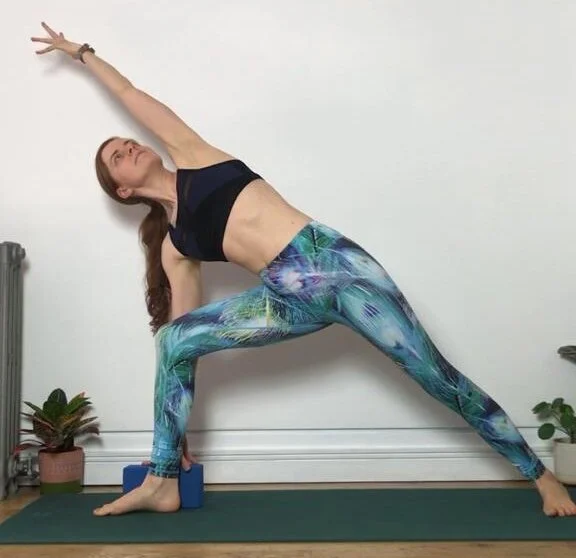Transitions: kicking up into handstand
Olivia Marley
There’s more than one way to get into a handstand. This post covers the way most people try first: kicking up, and shows some of the errors I see students make most often. We made this our class focus recently: rather than getting into a handstand and trying to hold it for as long as possible, focusing instead on how to improve the transition into the pose.
In the first clip you can see that both of my legs are bent. The plus points for this method is that it gets your feet off the floor, and you can see I start the motion with my top leg low (which allows me to get a bit of momentum going). But it feels a bit out of control, so doesn’t give a steady foundation to build upon to try and get a little closer to the pose.
For me, kicking up works best when I keep my top leg straight (so it swings up like a pendulum) and only bend my bottom leg (so the bottom leg acts like a spring). Compare how this first video looks - in particular what my top leg looks like, and how fast/ slow I’m moving - to the last video in this post.
In the next clip I've corrected my mistake of bending my top knee, but am now showing two more errors. One is that I get my top leg as high as I can, then try and kick up from there. If your top leg is already as high as possible you don’t give yourself any room to swing it.
Towards the end of this clip I’m also starting with my bottom foot flat on the floor. If you consider that your bottom leg is meant to act like a spring here to help you kick up, having the sole of your standing foot flat on the floor means that you’re taking out the springing potential that you could be creating from your ankle (and only really springing from your knee).
Compare how this looks - in particular how much my top leg moves, and how I use my bottom foot - to the last video in this post.
In this last video I’m still not trying to get all the way into a handstand, I’m just practising my kick up transition. I’ve corrected the errors from the last two videos. The things I’m focusing on here are:
Keeping my arms completely straight and actively pushing the floor away from me
Gripping with my fingertips
Coming on to the tiptoes of my standing foot, and bending my bottom knee and ankle a lot at the start of their springing action
Not swinging my bottom leg away from my hands as I spring, and instead thinking of springing straight up towards the ceiling
Keeping my top leg straight and bringing it low at the bottom of the spring so I can swing it higher at the top of the spring
Keeping my front side core muscles a little switched on (like I’m trying to cinch in my lower ribs and belly a bit
Moving slowly and not flailing my legs around!
Have you been trying to kick up as shown in either of the first two videos here? If so, how does it feel to try it like I am in the third video? Comment below or send us a message with any questions!









